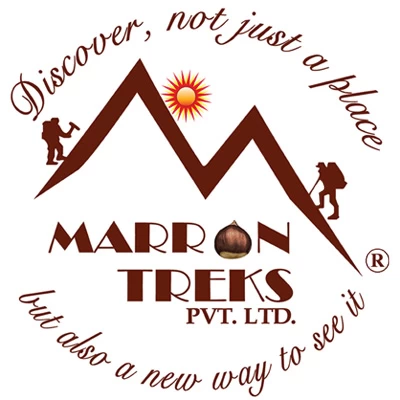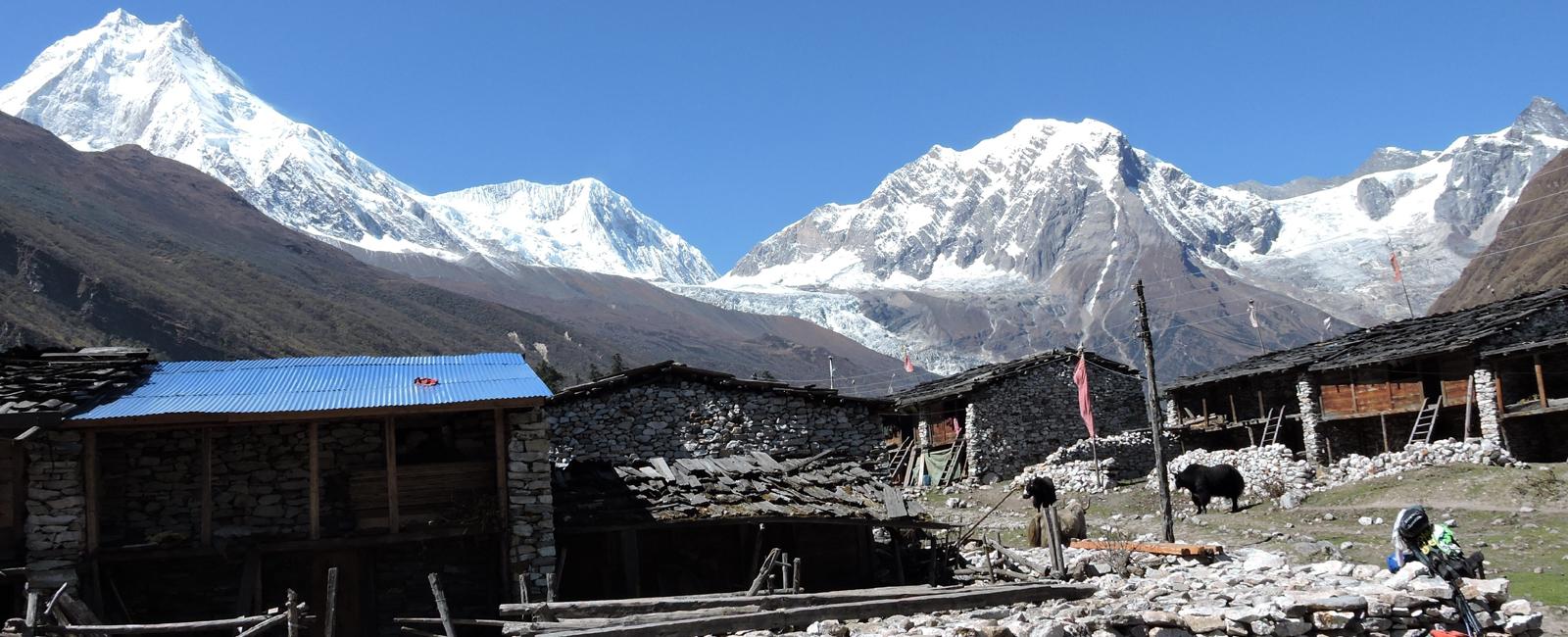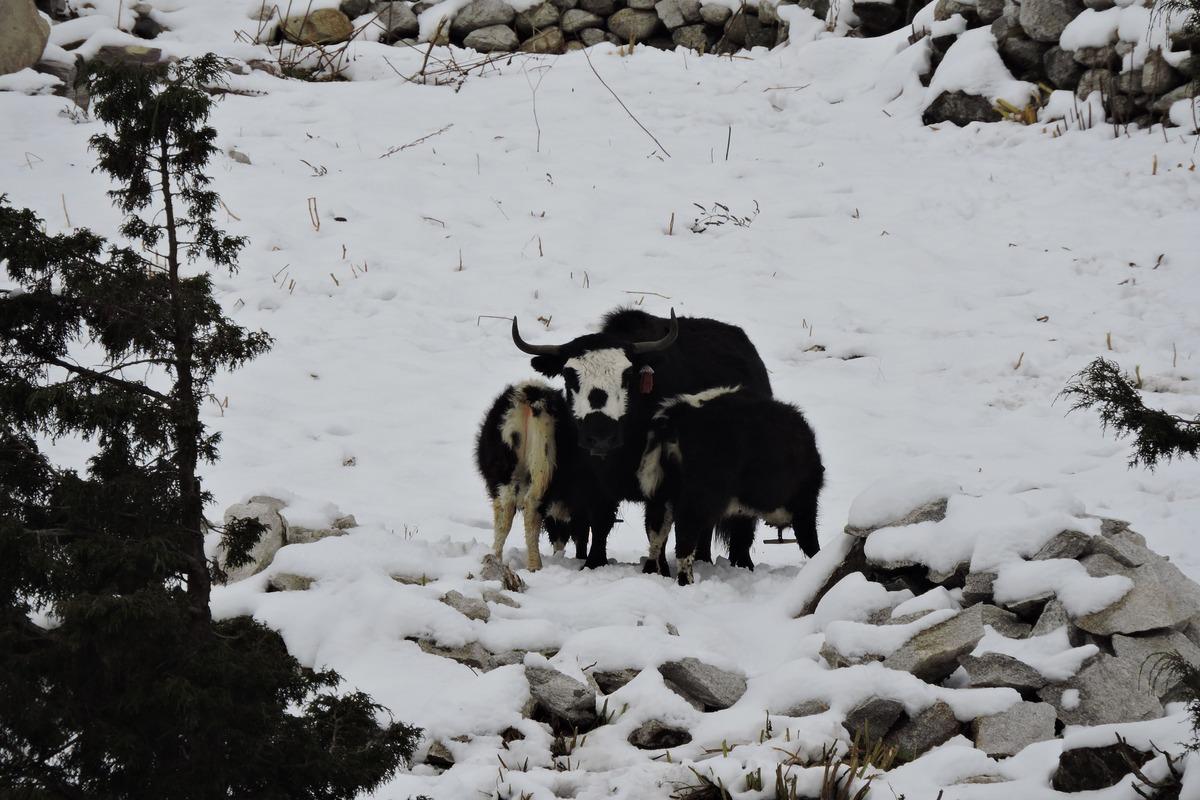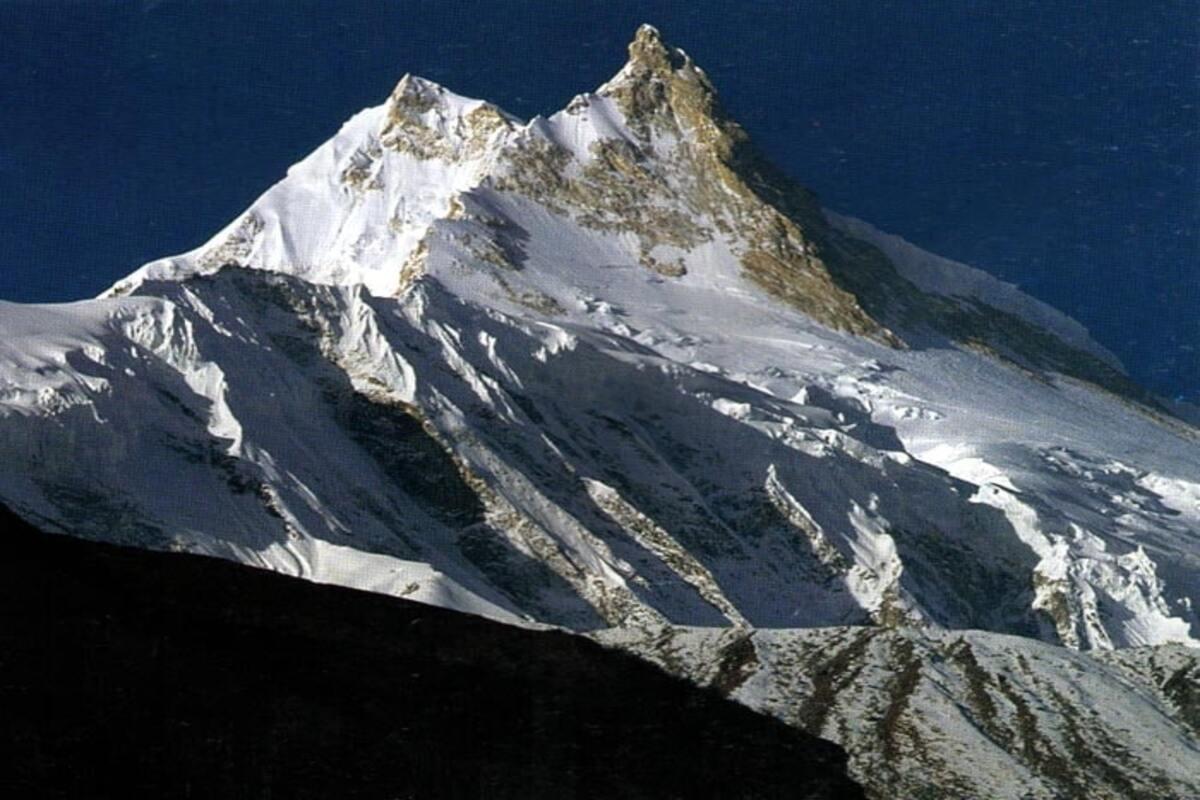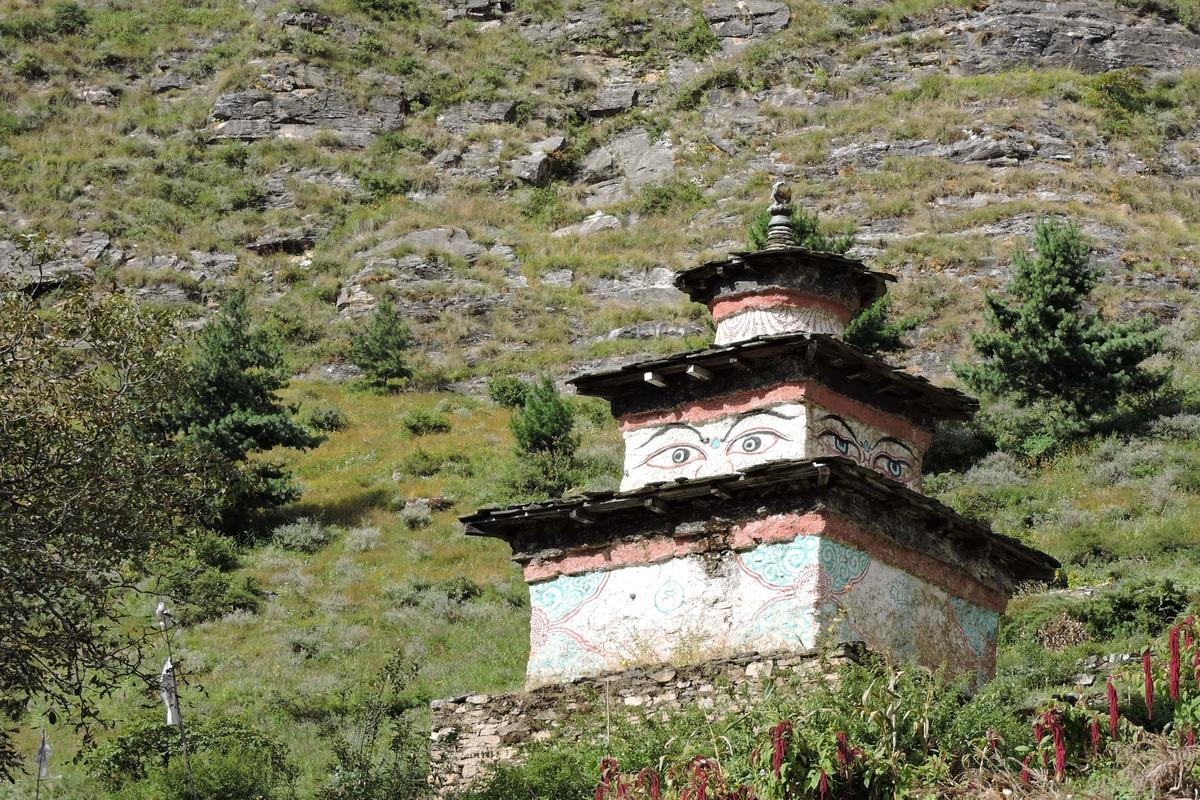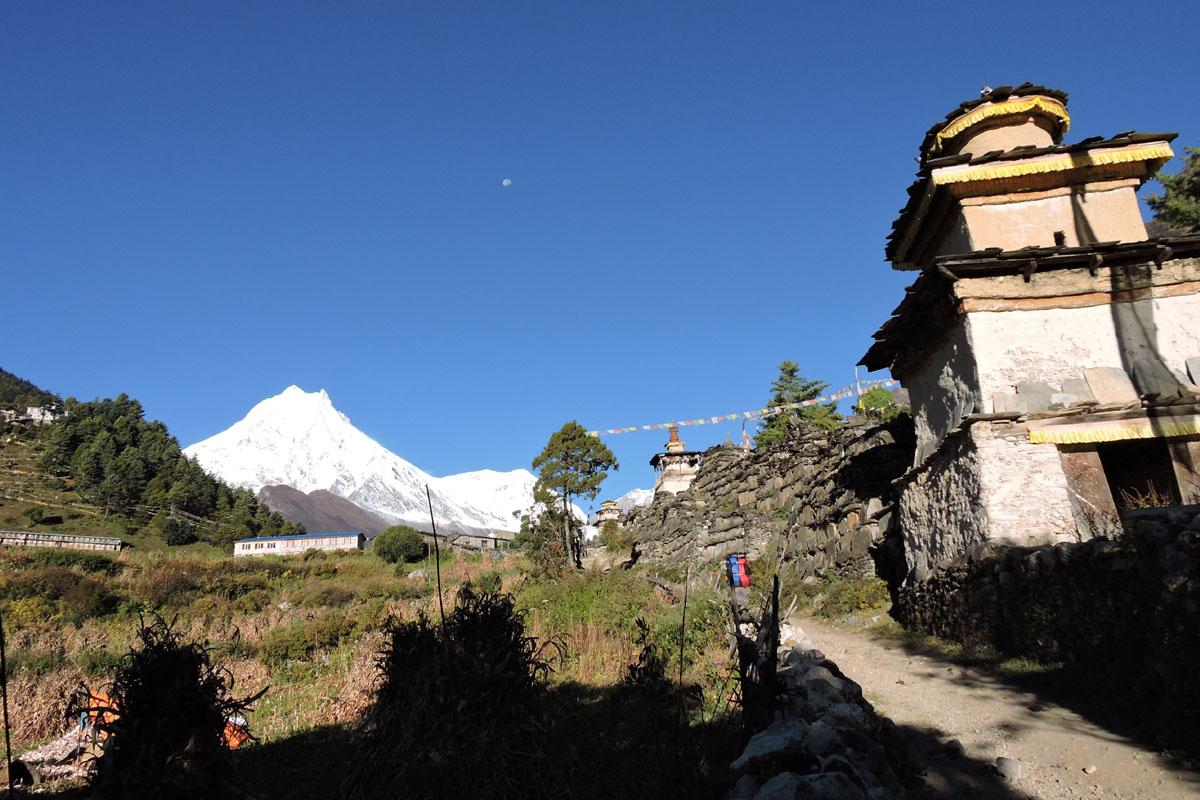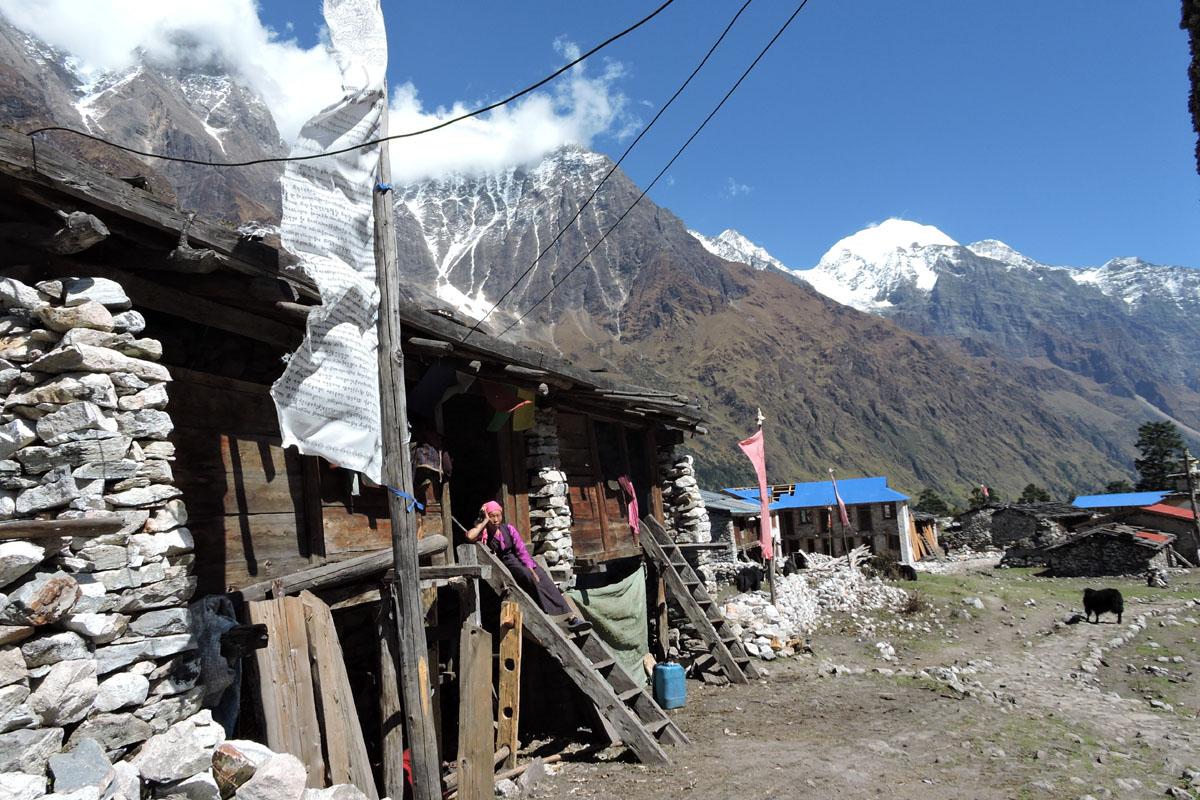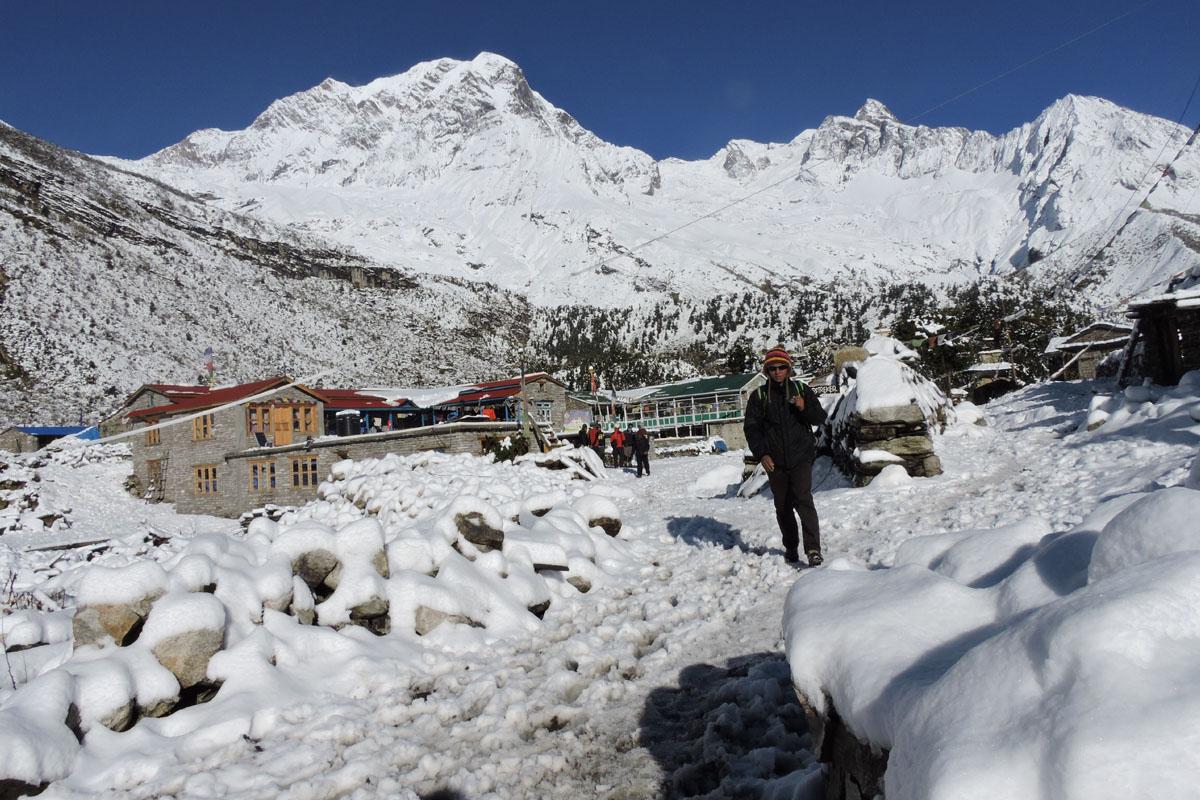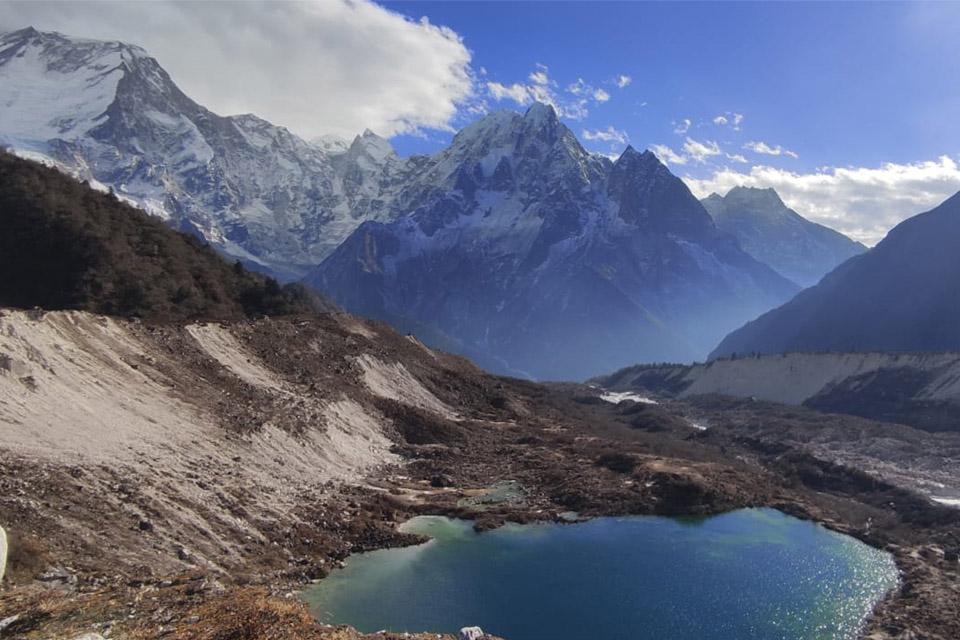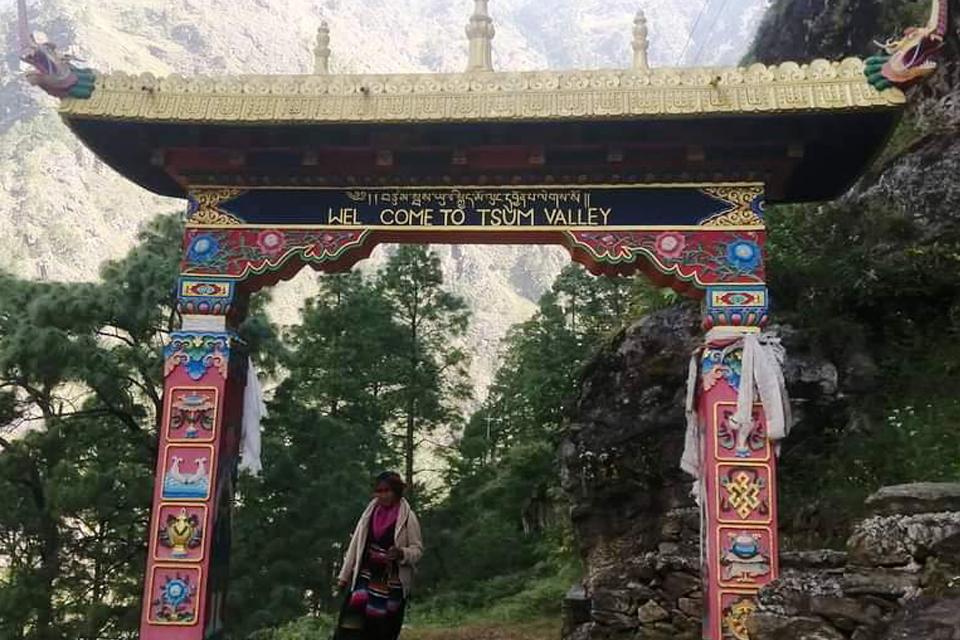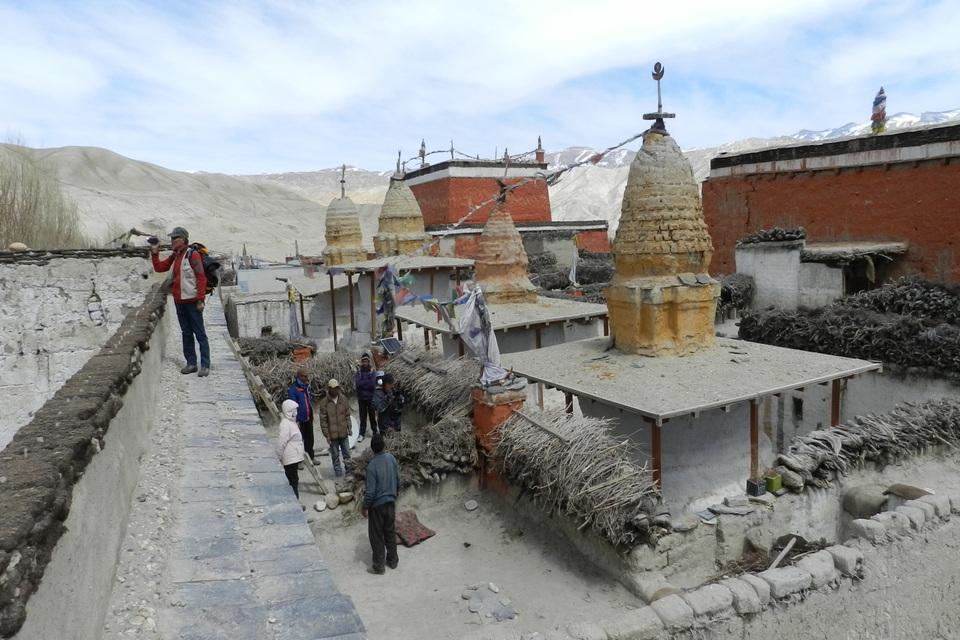Manaslu Tsum Valley Trek
Trip at a Glance
Manaslu Tsum Valley Trek is a remote area trek in the Manaslu region circling Mt. Manalsu, the world’s eighth highest peak and visiting the stunning Tsum Valley. The trek involves crossing over Larkya La pass at 5,106 meters and passing along traditional mountain villages heavily influenced by Buddhist religion. Visiting Tsum Valley inhabited by the indigenous Tsumba community of Tibetan origin and located inside the Manaslu Conservation Area is another prime attraction of the trek.
Manaslu Circuit and Tsum Valley Trek start by tracing the same route of Manaslu Circuit trek where you start the hike the next day from Machha Khola after 8-9 hours drive from Kathmandu. The trail then diverts from Jagat to Tsum Valley crossing over small settlements until arriving at Mu Gompa at 3,700 meters.
Explore Mu Gompa which is located close to Nepal Tibet border and has Mu Gompa monastery with a series of chortens providing spectacular mountain views. Then again you will join up the trekking route of Manaslu Circuit at Deng.
Following Deng, the trail passes along lush forests, rugged terrain, small mountain settlements until arriving at Samagoan. Manaslu Base Camp at 4800 meters is closer to Samagoan and a day is spent here for acclimatization and hike to Manaslu Base Camp which is about 7-8 hours round hike. After crossing the high mountain Larkya La Pass (5,106m) you will reach Dharapani to eventually drive back to Kathmandu.
Manaslu Circuit and Tsum Valley Trek is a great trek with a more off-the-beaten-path experience with fewer crowds and more pristine natural beauty. Though physically demanding, requiring a good level of fitness and stamina, the majestic views and cultural experiences make it well worth the effort.
Manaslu Tsum Valley Trek Highlights:
- Trek along the untouched region of the Manaslu.
- Trek past lush forests, alpine meadows & majestic snow-capped peaks.
- Visit the Tsum Valley considered remote with rich cultural & tradition.
- Witness unique Tibetan-influenced culture, traditions, and way of life.
- Marvel at the grandeur the eighth highest peak in the world- Mt. Manaslu (8163 m)
- Visit ancient Buddhist monasteries such as Mu Gompa and Rachen Gompa.
- Wildlife sightings like Himalayan wildlife, snow leopard, Himalayan tahr, musk deer & various birds species.
- Challenge yourself with exhilarating high mountain passes like the Larkya La Pass (5,106m)
Itinerary
Day 01: Arrival in Kathmandu (1400m)
Day 02: Drive from Kathmandu to Machha Khola (869m) via Soti Khola ((700m/9-10 hrs)
Day 03: Trek from Machha Khola to Jagat (1,300m/5-6 hours)
Day 04: Trek from Jagat to Lokpa (2,240m/5-6 hrs)
Day 05: Trek from Lokpa to Chumling (2,386m/6-7 hrs)
Day 06: Trek from Chumling to Chhokhang paro (3,031m/4-5 hrs)
Day 07: Trek from Chokhung paro to Nile (3,361m/5-6 hrs)
Day 08: Trek from Nile to Mu Gompa (3,700/5-6 hrs)
Day 09: Rest Day in Mu Gompa (3,700m)
Day 10: Trek from Mu Gompa to Burgi village via Milarepa cave (3,245m/5-6 hrs)
Day 11: Trek from Burgi village to Chumling (2,386m/5-6 hrs)
Day 12: Trek from Chumling to Deng (1,860m/6-7 hrs)
Day 13: Trek from Deng to Namrung (2900m/7-8 hrs)
Day 14: Trek from Namrung to Lho (3180m/4-5 hrs)
Day 15: Trek from Lho to Samagaon (3520m/4-5 hrs)
Day 16: Acclimatization Day at Samagaun (3520m)
Day 17: Trek from Samagaon to Samdo (3875m/4-5 hrs)
Day 18: Trek from Samdo to Dharmasala (4460m/4-5 hrs)
Day 19: Trek from Dharmasala to Bhimtang (3720m) via Larkya La Pass (5,106m/8-9 hrs)
Day 20: Trek from Bhimtang to Gho (2,515m/5 hrs)
Day 21: Trek from Gho to Dharapani (1860m/4 hours)
Day 22: Drive from Dharapani to Kathmandu via Besisahar (1400m/9 hrs)
Day 23: Final Departure
Upon arrival at the Tribhuwan International Airport in Kathmandu, you will be received by a representative from Marron Treks and transferred to your designated hotel. Welcome drinks will be served at the hotel and after that we have a quick pre-trip meeting to discuss on the necessary formalities and the trekking itineraries. You may then check in to your room and freshen up. In the evening, you can stroll around the vicinity of your hotel to get a superficial glimpse of this great city. Of course, you will know Kathmandu better, when you head out for a sightseeing tour tomorrow.
We have to go through Arughat and Soti Khola on our way to Machha Khola today. The nine-hour drive offers a variety of scenery, including rivers, hills, villages, and rice farm settings. The Machh Khola is located in Mid-West Nepal's Gorkha district. As one travels into warmer climates, they pass by numerous farming communities and cities along the Trisuli and Budi Gandakii rivers. Spend the night in a nearby guest home overlooking a stunning valley.
Today’s trail follows the course of the Buri Gandaki River. The route necessitates us to traverse up and down the ridges. Eventually the river valley widens and then we proceed for a pleasant walk along the easy trail to Jagat (1300m), a compact village with a beautiful flagstone square. We camp slightly below the village at the vicinity of Bhalu River.
Our early morning hike takes us up a steep slope to Salleri, where we make our descent in the direction of Sirdibas. The trail leads to Ghatta khola and continues upstream to the Gurung settlement of Philim, where the valley widens. We walk through the forest towards the north till we arrive at Chisopani. After departing from Chisopani, we hike for about 30 minutes down the gorge before reaching the stunning waterfall. After that, we stroll through forests of pine and rhododendron and descend to Lokpa by way of the trail that leads to Tsum Valley.
The trail is primarily a rise, making it a challenging day due to the increasing altitude. Along the trek, the expansive views of the Himalayas continually reveal and reveal themselves. We stroll through the charming Lungwa Khola settlements before climbing up through pine forests to reach Gumlung. We eventually arrive in Chumling, the lower Tsum valley, which is well-known for Chumling Gompa and its stone-paved streets, after crossing the Siyar Khola.
Today's walk begins with a crossing of the suspension bridge. We stroll up the opposite path, taking in the sights of Ganesh Himal as we head toward Rainjam and Serpu Khola. We continue across the bridge and move toward the village of Gho. After two more hours of walking, we finally arrive at Chokhangparo by walking to the upper Tsum valley.
The altitude is rising sharply today, and the trail is also climbing. We stroll past the suspension bridge that crosses Lamagaon and head toward Nunnery Gompa, also called Rachen Gompa. We visit the Gompa and then head back down the route. Before arriving at the Nile, we travel via several Buddhist temples and the villages of Shiar Khola, Lar, Phurbe, and Pangdun. We also cross the last bridge. When you've rested at the Nile, you can visit the monastery at Chule, which is close by.
We are getting closer to the Tibetan border on the trek today. We go up the valley's western bank, passing through scenes reminiscent of Tibet. Finally, after trudging for five or six hours, we arrive at Mu Gompa.
Resting and touring the Mu Gompa, the other Tibetan sceneries, and the most isolated part of the Tsum valley occupy our day today. The biggest monastery in the area is Mu Gompa. Following our tour at Mu Gompa, we might think about taking a stroll to the foot of the Pika Himal (4,865 m).
We retrace our steps to Chhule and Phurbe today. We reach Burgi hamlet on the east bank of Shiar Khola. This is a charming little village. We ascend the Milarepa cave, which is well-known for its breathtaking views of the Poshyop glacier, the Churke Himal, and the Kipu Himal.
After retracing our steps and enjoying the thick pine and rhododendron forests, we descend to Chokhangparo and proceed in the direction of the lower Tsum Valley Chumling.
Today's journey should be easier since you will be leaving Chumling and continuing your descent. To get to Lokpa Village, you will be traveling along the Shair Khola riverbank. On a good day, the path may pass through sizable herds of goats and sheep. Following Lokpa, the trail falls as we pass the Budi Gandaki on a sturdy bridge. From there, it enters a small gorge and begins to rise steadily through the valley, alternating between ascent and descent. We travel through bamboo forests and cross a river on a suspension bridge to arrive at Nupri, which is the Gurung settlement of Deng (1860m).
The hike will begin early from Deng and take you across a river and up a hill. Mani stones can be seen in the little settlements along the trail as it continues.
Every stone bears a Buddhist mantra, signifying that you are approaching an area influenced by Tibetan culture. Today, we journey through several villages, including Ghap, Ghapsya, Bihi Phedi, and Rana Gaun. Savor the customary lifestyle and communities.
With the sounds of insects and mules, the road continues into the deep woodlands. It will take a few hours to arrive at Namrung
You will be treated to a breathtaking view of the mountains during today's climb, including Himalchuli, the Shring Range, Mount Manaslu, and others. We hike through Sho Gaun and Lihi.
Ultimately, the settlement of Lo Gaun will recognize you thanks to a lengthy stone Mani wall. We set up a lunch camp today along with a quick hike. You could climb to Ribung Gompa in the afternoon.
The trip begins from Lho Gaun and travels along a trail to the 3500-meter-high Shyala hamlet, which offers breathtaking views of Mt. Manaslu.
The path continues in the direction of Samagaun's village. Throughout the walk, this is one of the most picturesque settlements you will come across. free this afternoon.
You will spend today at Samagaun getting used to the altitude. You will go to the Manaslu Base Camp (4800m) if you would like to hike for the entire day to acclimate. You can finish this round-trip in roughly seven or eight hours. If you choose the half-day hike, you can reach Birendra Tal or the glacier that spans the valley. You'll spend the night back in Samagaun.
The trail will quickly pass fields today and then progressively climb. When you arrive in Samdo, a tiny Tibetan refugee settlement, keep an eye out for the breathtaking view of the Manaslu. This community is quite near the border with Tibet.
After breakfast in Samdo, there's a Tibetan market called Larke Bazaar, which is open during specific seasons.
After that, you'll descend to the Budi Gandaki River and over a wooden bridge. Next, you'll hike up and see the breathtaking views of the Larkya Glacier while walking across two streams. Next, you will circumnavigate the Salka Khola valley and ascend once more to arrive to Dharamsala, also called Larke Phedi. You will be preparing for the major, exhausting day—the climb to the Larke-La pass—tomorrow.
It's going to be an exhausting day. After departing from Dharmasala, you will progressively ascend to Cho Chanda and then continue on to the Larkya La Pass.
From the pass, there are spectacular views of Himlung Himal (7126 meters), Cheo Himal (6820 meters), Gyagi Kung, Kang Koru (6981 meters), and Annapurna II (7937 meters). You will arrive at Bhimtang for the night by walking across the steppe.
Today will be a delightful walk on the steady downward to reach our overnight destination at Gho, after a strenuous climb up the Larkya-La pass. The location is surrounded by forests; to get to Gho, walk from Bimthang through immaculate forests with rhododendron, pine, and oak tree lines, passing by various farm shades.
It is much simpler to walk in the morning from Gho to the Manang region in Telje village along the Marysangdi River, as the trip is mostly downhill. On the Annapurna Circuit walking circuit, Dharapani is a sizable community with a multitude of exquisite resorts. The internationally renowned Annapurna circuit path is combined with the Manaslu circuit trekking trail. Once the Larkya La pass is completed, if you have enough time, you might head towards the Annapurna circuit. You will have to spend your final day in the highlands in one of the most picturesque settlements, Dharapani.
We will travel to Besisahar by local shared jeep after breakfast; the trip takes two to three hours. We will then travel back to Kathmandu, which will take about six or seven hours. We strongly advise taking a private vehicle from Besisahar to Kathmandu in addition to using local transportation. We will end our amazing journey in Kathmandu.
Today is your final day in Nepal. A representative of Marron Treks will escort you to the Tribhuwan International Airport, three hours to your flight schedule. As we reluctantly wave goodbye to each other, let’s make a wish to stumble upon one another very soon. Have a safe flight back home and we look forward to being your travel companion in Nepal again.
What is included?
- Airport pick-up and drop services.
- Hotel accommodations in Kathmandu with breakfast.
- Kathmandu/Machha Khola & Dharapani/Kathmandu transfers by private vehicle.
- All trekking accommodations with Breakfast/Lunch/Dinner at local lodges.
- A comprehensive medical kit (will be carried by the trekking guide).
- Experienced Government licensed English Speaking Guide & Porter (1 porter for two people) including their food, accommodation, salary & insurance.
- Manaslu & Tsum Valley special permit TIMS (Trekkers' Information Management System).
- Manaslu & Annapurna conservation area permit.
- Four seasonal sleeping bags (to be returned after trip completion) & Marron Treks duffel bags.
- Farewell dinner with live Nepalese cultural program.
- All government and local taxes
What is not included?
- International airfare.
- Nepal entry visa fee – Visa can be obtained upon your arrival at the Tribhuwan International Airport in Kathmandu. (USD50 for 30 days)
- Lunch & dinner in Kathmandu.
- Personal travel insurance.
- Emergency rescue evacuation (to be covered by the client's travel insurance).
- Other expenses of a personal nature (phone calls, laundry, battery recharge, extra porters, bottle or boiled water, hot shower etc.)
- Cost incurred due to the addition of extra days or change in the itinerary due to bad weather, political turmoil or any other unforeseen contingencies.
- Bar bills, alcoholic drinks & beverages.
- Tips to guide & porters (Tipping is expected).
Route Map
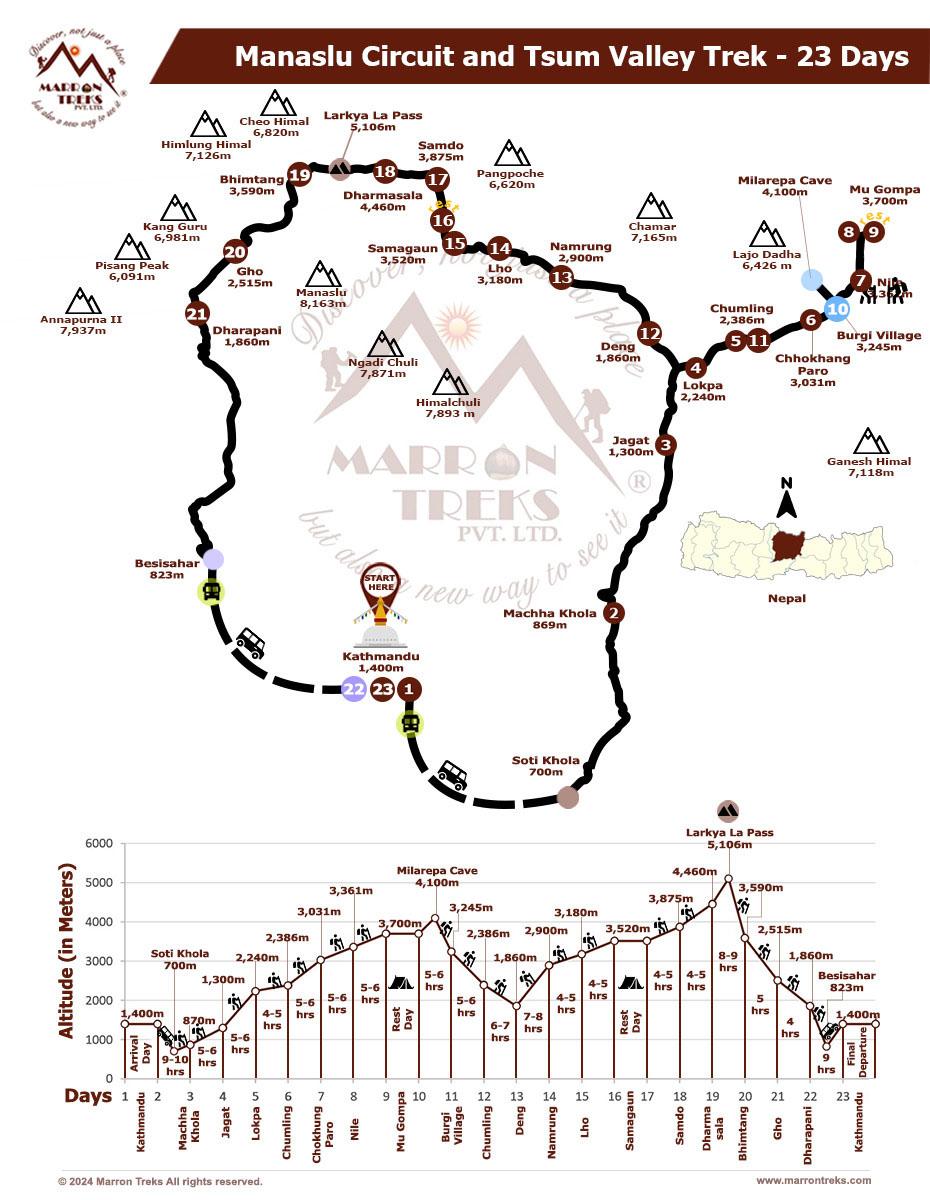
Trip Info
Accommodation
While you are in Kathmandu, we opt to accommodate you in 4- or 5-star hotels like Hotel Royal Singhi (4-star), Hotel Manaslu (4-star), Radisson (5-star), Yak & Yeti (5-star), or similar. During the trek, you will be accommodated in a local mountain lodge, better known as Tea House. These lodges and teahouses provide good services and are equipped with basic amenities. We will endeavor to provide you with the best accommodation available along the route so that you get a good night’s rest in a hygienic milieu.
Meals
We never compromise the quality of food or the health of the trekkers as well as the crew members. Generally, we opt for the fresh and nutritional local community food available. You could make your delicious pick from an array of traditional foods like Sweet potatoes, buckwheat barley, etc. This way, you could not only get a real sense of the local culture and life patterns but also contribute to promoting the locally available resources of organic food and beverages. Besides, a wide range of Continental, Chinese, Italian and Indian cuisines like Pizza, Spaghetti, French Fries, Soups, Breads, Masala curry, etc. are also available in the restaurants for your retreat.
Acclimatization
Altitude sickness is a serious risk while trekking in the Himalayas. It's important to acclimatize properly by spending a few days at lower altitudes before heading higher. By spending time at lower altitudes before pushing higher, your body has time to adjust. Our trekking packages have enough acclimatization days planned where you'll be spending a day or two at lower altitudes, allowing your body to adjust to the increasing altitude.
Electricity & drinking water
For an additional cost, you can use the electricity in all tea houses and lodges to recharge your batteries. The lodges have packaged mineral water for sale, or you can fill your bottle with boiling water. To make water drinkable, you can use water purification tablets too. But, due to hygienic issues, you should avoid drinking water from taps, rivers, or wells in trekking areas.
Communication
At lodges, restaurants, and hotels, Wi-Fi is available for an additional fee in the most popular trek regions, like Everest, and Annapurna. However, at high elevations, phone calls are the only means of connection. Our office in Kathmandu is in constant communication with your trek guide. In Kathmandu, you can purchase a local sim card for communication purposes. At high elevations, the mobile signal might not be as strong, though.
Luggage
Our porters are paired with one trekker for every two hikers, and one porter can safely carry 30 kg maximum weight. Therefore, we advise you to fill your duffle bag not more than 15 kg with your belongings. You may carry a small backpack with your valuables and informational documents. The things you are not taking along on the trek can be stored in a hotel in Kathmandu free of cost.
Typical Trek Day
Mostly your trek day starts with breakfast at 7-8 am, followed by a 3-4 hour morning trek. Lunch break is around an hour, then you continue trekking to your destination for the day. After reaching the teahouse lodge, you can relax, explore nearby areas, and enjoy dinner at 6-7 pm. Evenings involve socializing, a trek briefing, and leisure activities before bed.
Travel Insurance
It is advised that you arrange your travel insurance before leaving your homeland. The main thing is to make sure that your insurance covers you for both- medical and evacuation costs. Having travel insurance with you makes your trip secure and hassle-free.
Our Guides
Guides play a significant role during the trek. They are the ones who literally decipher the trekking codes for you so that you can actually connect with nature, culture and people along the way. We have helpful and dedicated trekking guides who are very well-versed in the culture, life patterns and every single detail pertaining to the trek region you are traveling in. Thus, in the company of our professional Sherpa guides, your trek becomes not only entertaining but also equally informative.
Porter and Staff Care
When it comes to high-altitude trekking, porters and staff members make up a pivot. Marron Treks ensures that all the porters and staff members going to high altitudes are provided with adequate clothing and equipment. All our field staff are covered by insurance.
